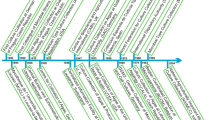Abstract
Establishment of national biological resource centres (BRCs) is of special concern and requires harmonization of regulations on microorganisms’ handling, improvement of legal control pertaining to intellectual property right, access to genetic resources and fair benefit sharing arising from their biotechnology application. As exemplified by the Regional Specialized Collection of Alkanotrophic Microorganisms (acronym IEGM, World Federation for Culture Collections # 768, www.iegm.ru/iegmcol) hosted at the Institute of Ecology and Genetics of Microorganisms, the role of specialized microbial collections is emphasized as the governing factors of innovative development of biotechnology and bioindustry. The publication aims at drawing attention to the regional BRC being formed in the Perm Krai which provides the appropriate information on the holdings and is responsible for screening, study and maintenance of valuable microbial gene pool to meet the needs of ecology, industry and biotechnology, and for developing novel methodological approaches to studying extremotolerant microorganisms. This centre also contributes to the development and application of advanced achievements in enzymatic transformation of carbon compounds, production of fodder using non-traditional raw material, oil- and gas-prospecting activities, monitoring and bioremediation of contaminated sites.
Similar content being viewed by others
References
Biological Resource Centres: Underpinning the Future of Life Sciences and Biotechnology, OECD Sci. Inform. Technol., 2001, vol. 7, pp. 1–68 (http://www.oecd.org/dataoecd/55/48/2487422.pdf).
Réchaussat, L., The OECD Initiative: Towards a Global Network of Biological Resources Centers, in Innovative Roles of Biological Resources Centers. Japan Society for Culture Collections and World Federation for Culture Collections, Watanabe, M.M., Suzuki, K., and Seki, T., Eds., pp. 289–292.
Kalakutskii, L.V. and Ozerskaya, S.M., Biological Resource Centers: Present State in Russia and Worldwide, Organizational Problems, and Prospects of Development, Vestn. Biotekhnol., 2011, vol. 7, no. 1, pp. 28–40.
Desmeth, P. and Bosschaerts, M., The Necessary Adaptation of Culture Collections to the New Socio-Economic Environment at Global Level, Proc. 3rd Int. Conf. “Microbial Diversity: Current Situation, Conservation Strategy and Biotechnological Potential”, Perm, Russia, 2008, pp. 144–146.
World Directory of Collections of Cultures of Microorganisms, 2011 (http://www.wdcm.org/05.09.2011).
Larkin, M.J., Kulakov, L.A., and Allen, C.R., Biodegradation by Members of the Rhodococcus: Biochemistry, Physiology, and Genetic Adaptation, Adv. Appl. Microbiol., 2006, vol. 59, no. 1, pp. 1–29.
Martínková, L., Uhnáková, B., Pátek, M., Nevera, J., and Ken, V., Biodegradation Potential of the Genus Rhodococcus, Environ. Int., 2009, vol. 35, no. 1, pp. 162–177.
De Calvalho, C.C.R. and Da Fonseca, M.M.R., The Remarkable Rhodococcus erythropolis, Appl. Microbiol. Biotechnol., 2005, vol. 67, pp. 715–726.
Philp, J.C., Kuyukina, M.S., Ivshina, I.B., Dunbar, S.A., Christofi, N., Lang, S., and Wray, V., Alkanotrophic Rhodococcus ruber as a Biosurfactant Producer, Appl. Microbiol. Biotechnol., 2002, vol. 59, no. 2–3, pp. 318–324.
Consolidated Catalogue of Microbial Cultures Held in Russian Non-Medical Collections. CD version, release 1.0 (Fall 2002). www.vkm.ru
Yamasato, K., Deteriorated/Deteriorating Culture Collections, in Endangered Culture Collections. Proc 1st and 2nd Int. Symp., Colwell, R.R., Ed., WFCC, Maryland, USA: Biotechnology Institute. Technical Publication, 1992, pp. 45–50.
Katalog shtammov Regional’noi profilirovannoi kollektsii alkanotrofnykh mikroorganizmov (Strain Catalogue of the Regional Specialized Collection of Alkane-Utilizing Microorganisms), Ivshina, I.B., Ed., Moscow: Nauka, 1994.
RF Patent no. 2180276, 2002.
Kuyukina, M.S., Ivshina, I.B., Philp, J.C., Cristofi, N., Dunbar, S.A., and Ritchkova, M.I., Recovery of Rhodococcus Biosurfactants Using Methyl Tertiary-Butyl Ether Extraction, J. Microbiol. Meth., 2001, vol. 46, no. 2, pp. 149–156.
RF Patent no. 2193464, 2002.
RF Patent no. 2298033, 2007.
Ozerskaya, S.M., Kochkina, G.A., Ivanushkina, N.E., Zaprometova, K.M., Eremina, S.S., and Knyazeva, E.V., State of Microorganism Collections in Russia, Vestn. Biotekhnol., 2006, vol. 2, no. 3, pp. 51–61.
Author information
Authors and Affiliations
Corresponding author
Additional information
The article was translated by the author.
Original Russian Text © I.B. Ivshina, 2012, published in Mikrobiologiya, 2012, Vol. 81, No. 5, pp. 551–560.
Rights and permissions
About this article
Cite this article
Ivshina, I.B. Current situation and challenges of specialized microbial resource centres in Russia. Microbiology 81, 509–516 (2012). https://doi.org/10.1134/S0026261712050098
Received:
Published:
Issue Date:
DOI: https://doi.org/10.1134/S0026261712050098




